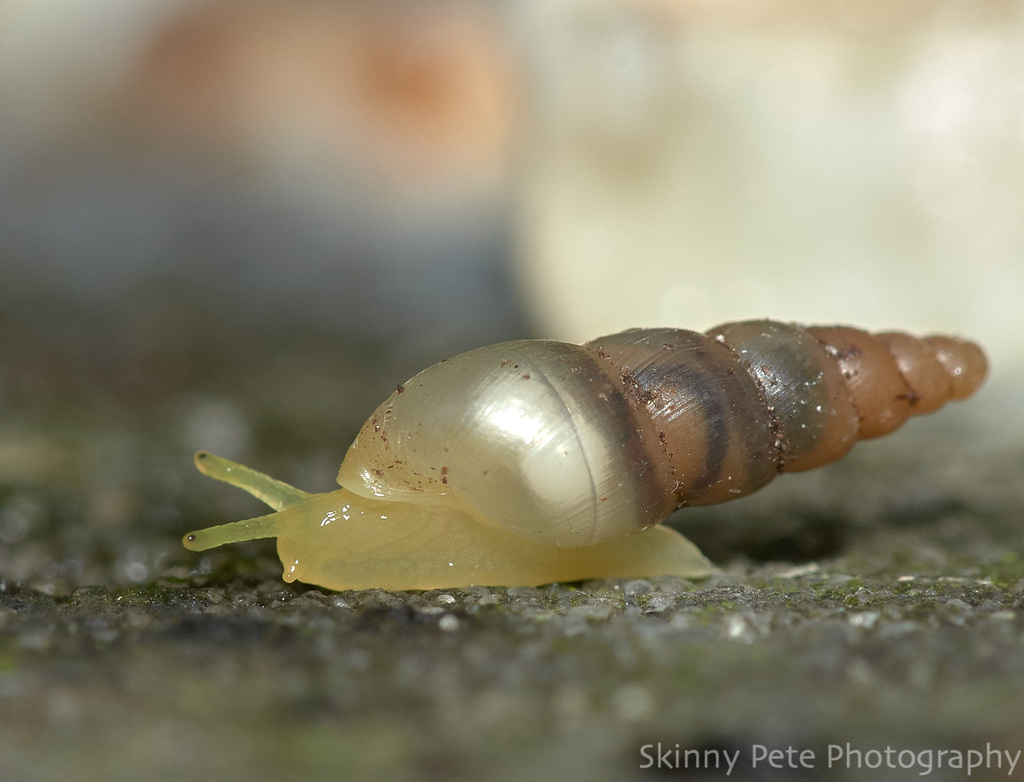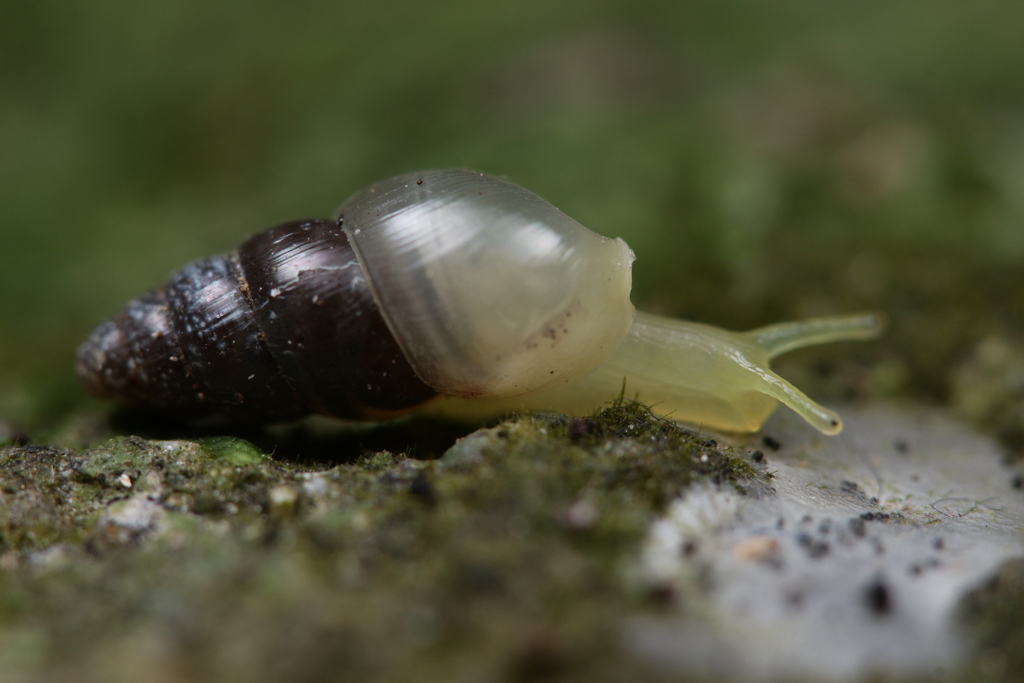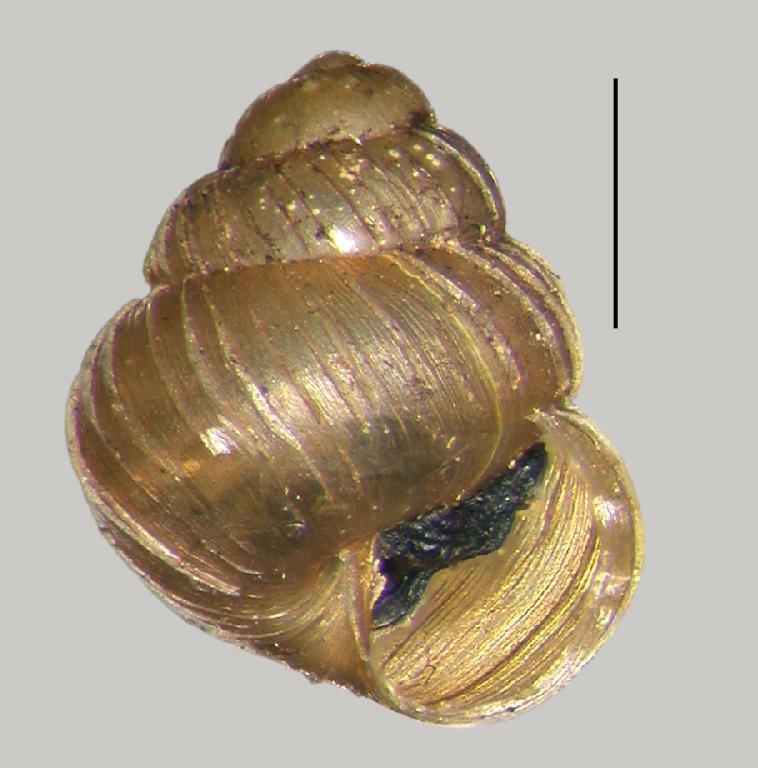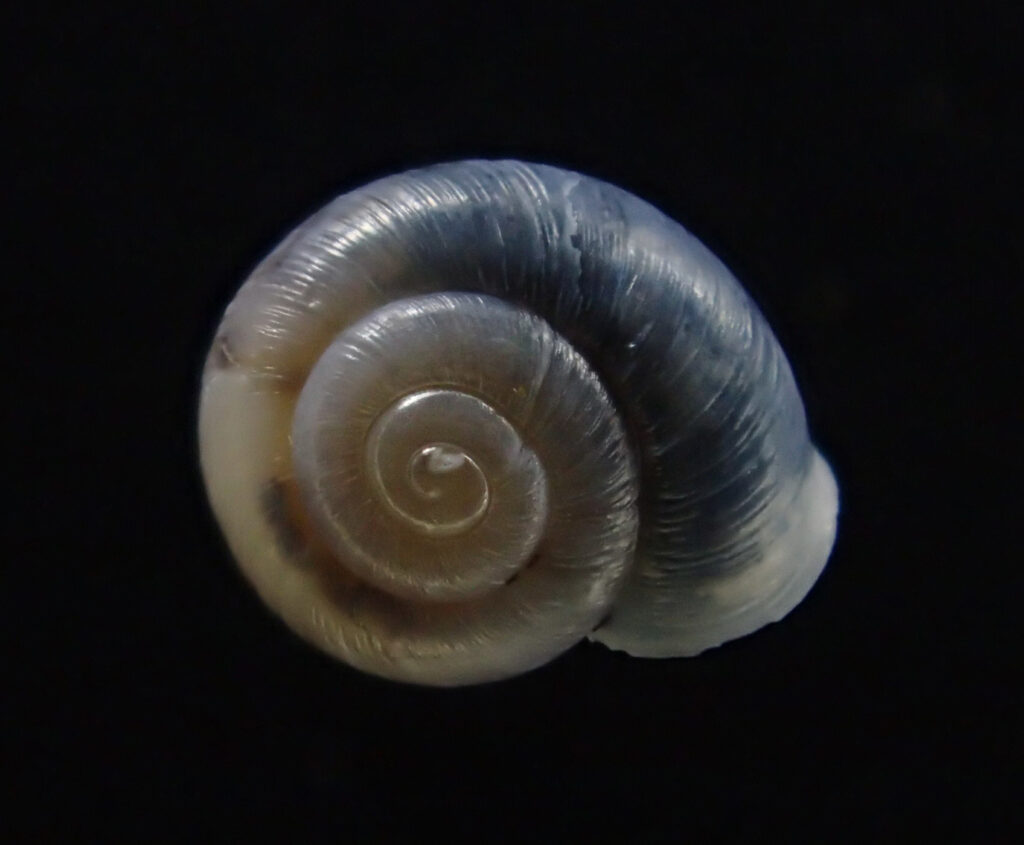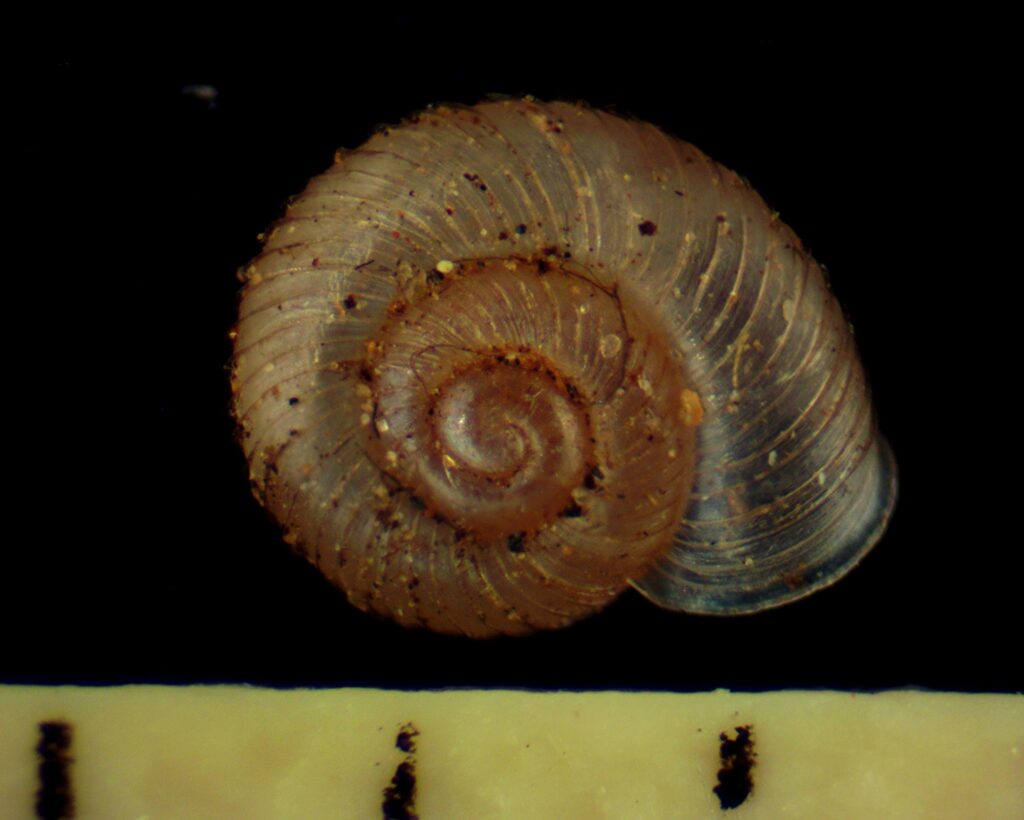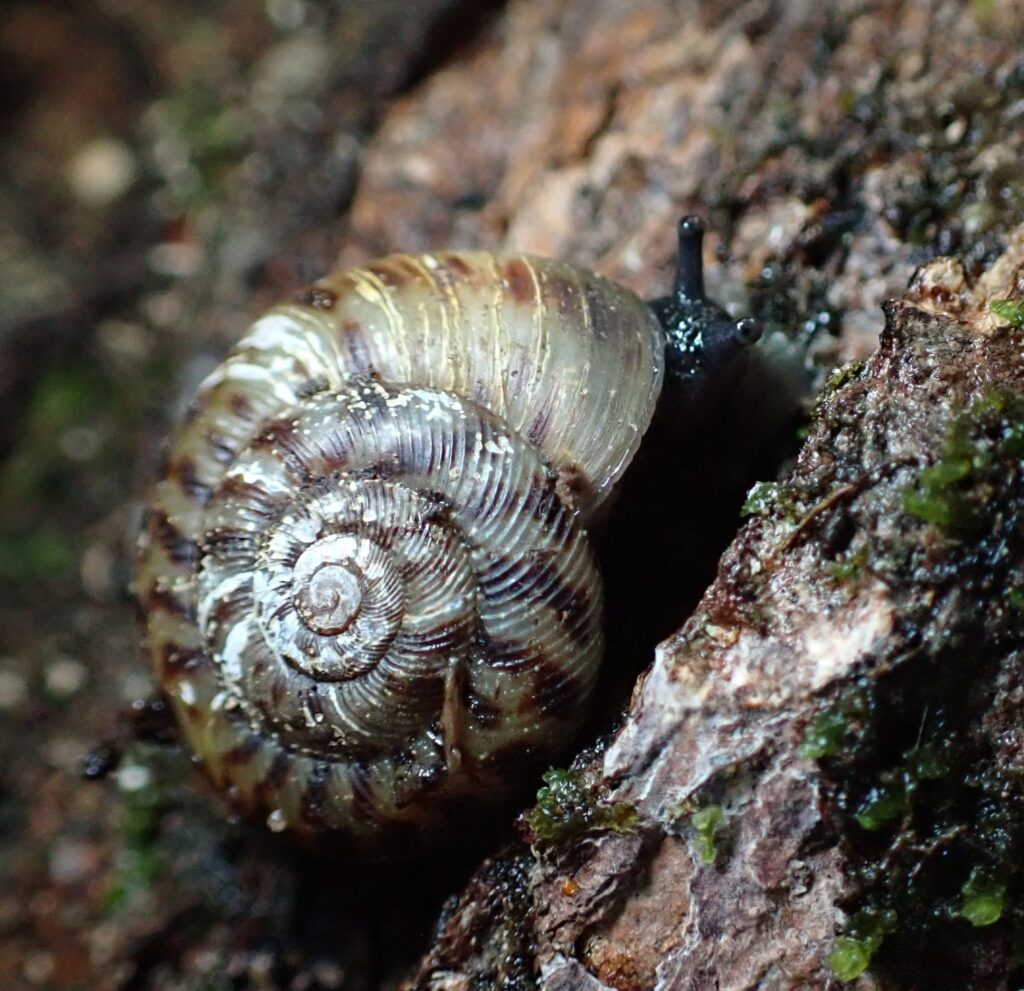
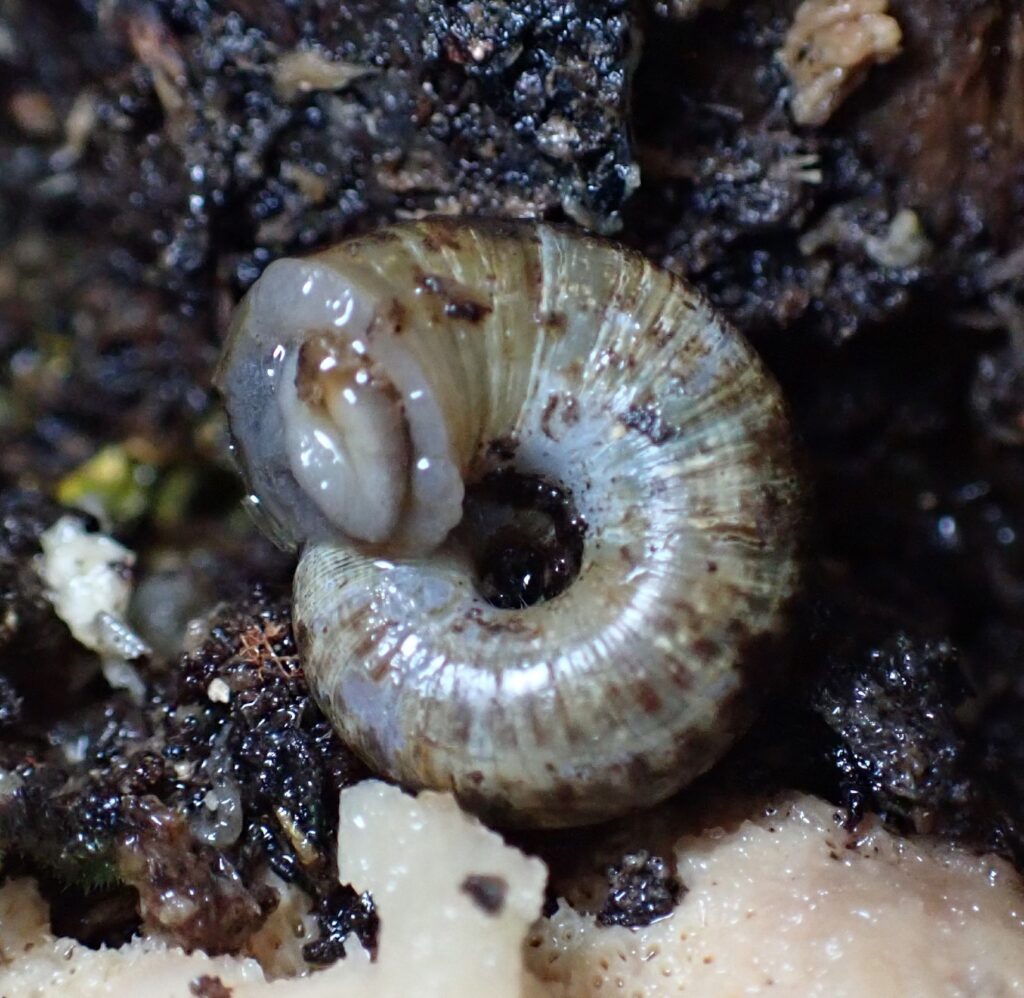
Image Usage Information
Family: Discidae
Common name: Coastal Plain Disk
Discovery: Bland, 1861
Identification
Width: 15-18 mm
Height: 8-10 mm
Whorls: 5+
The shell of this snail is flattened heliciform with strong radial ridges and an open umbilicus, as in many of the species in its family. The color pattern upon its shell is spaced, radial, irregular spots – like Anguispira alternata but more colorful, with smaller, more distinct reddish patches on a yellowish background. It also differs in having whorls that are rounder and mucus that is clear. Larger shells may be darker in color.
Ecology
Anguispira fergusoni is found in maritime and piedmont woods and other coastal habitats from Long Island south. It may ascend lower tree trunks on damp nights. Örstan (2009) monitored five individuals in Montgomery County, Maryland that were dormant beneath the soil surface, from late November until warm weather in late March when they emerged. Slapcinksy (pers obs) notes that A. fergusoni colonies can be large at senescent trees with trunk cavities.
Taxonomy
Synonyms are: Anguispira alternata fergusoni, Helix alternata fergusoni.
Distribution
This animal is an Atlantic Coastal species, with a range from southern New York to South Carolina. In Virginia it found along the coast and near rivers in the Piedmont, but is reported as far west as Pittsylvania County along the southern border. Interior reports may be in error.
Conservation
NatureServe Global Rank: G4
Publication date: 7/2012, Updated 2/2018
